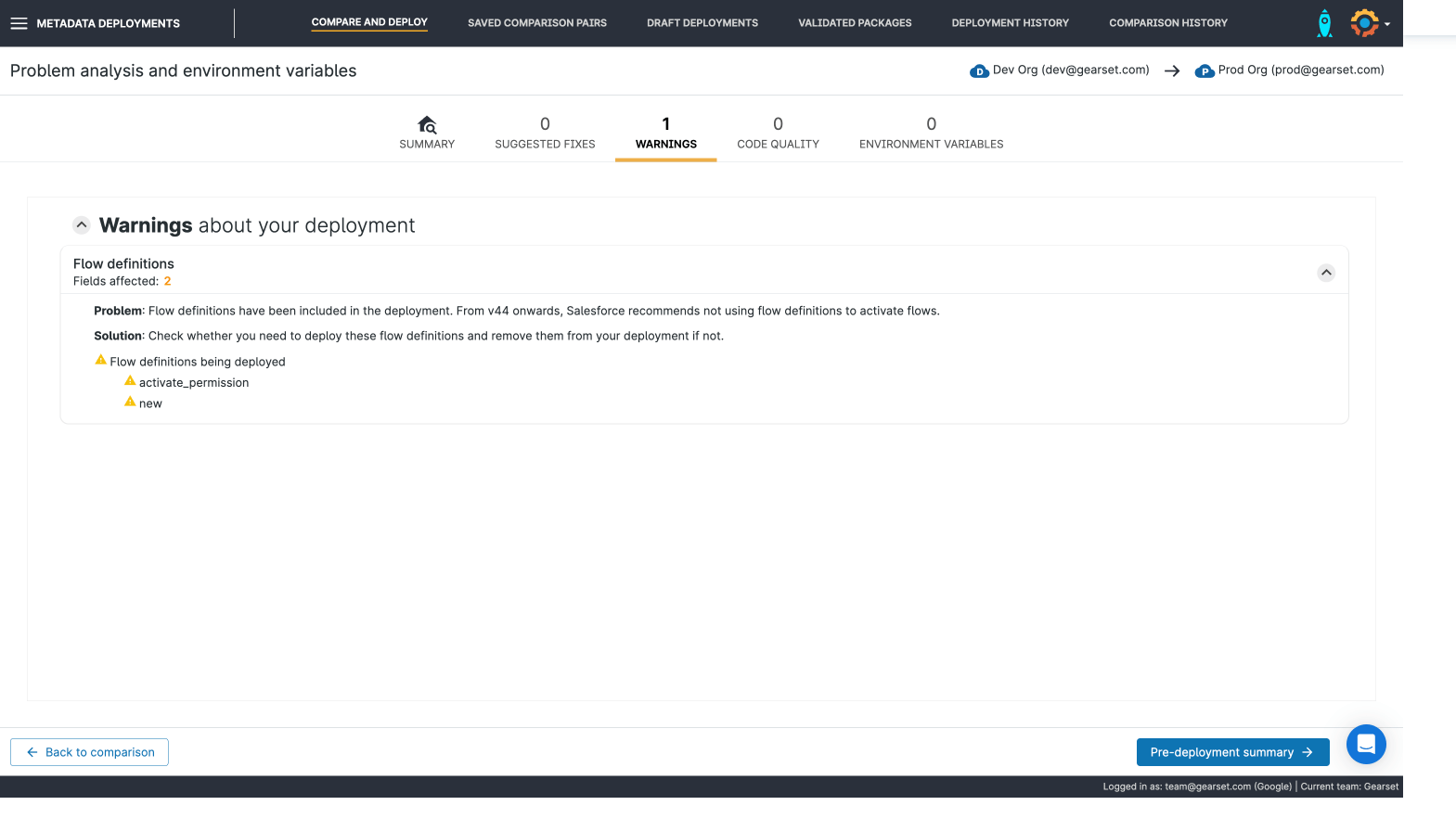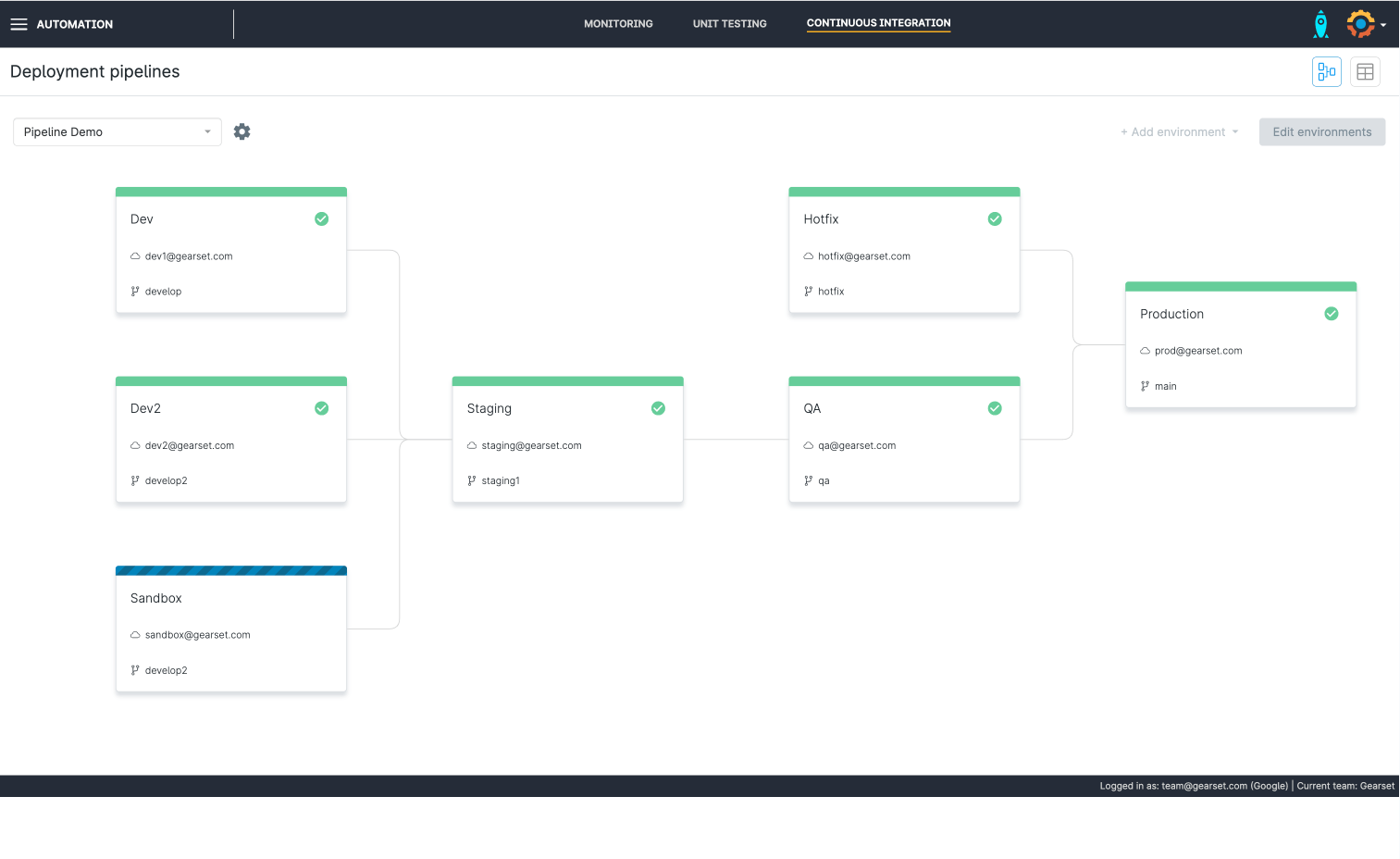DevOps is now the preferred approach to Salesforce development, with a rapid growth in adoption over the past five years. Don’t just take our word for it — Salesforce acknowledged as much with their release of DevOps Center in late 2022.
But while more and more teams can see the benefits of DevOps, taking the right steps can be daunting if you’re still using basic tools like change sets. In this post we’ll explore how teams can reach DevOps maturity with the right toolset.
What is DevOps maturity?
Teams are usually drawn to Salesforce DevOps by the remarkable results — increased deployment frequency, accuracy and ROI, to name just a few. But it’s wrong to think of adopting DevOps as an overnight switch that suddenly produces all these benefits.
Convinced by the need for Salesforce DevOps, businesses can waste time and resources on totally overhauling their Salesforce development process, hoping to immediately see results once the implementation is complete. This “big bang” approach to Salesforce DevOps generally does more harm than good: your development work will be stalled during implementation, your Salesforce team will struggle to immediately master new processes, and you’ll have little opportunity to test whether the new processes and tooling actually work for you.
Setting your sights on a fixed “DevOps goal” — such as mastering a certain process or reaching a specific KPI — misses the point. It’s better to view DevOps maturity as a journey, rather than a destination. In truth, there is no “end point” to DevOps maturity — even the most advanced teams will be looking for ways they can continue to improve.
Viewing DevOps as a journey encourages you to implement tooling changes iteratively, applying a principle of “continuous improvement”, rather than suddenly overhauling your processes. This is especially true when trying to adjust to a DevOps mindset within the company and gain buy-in from reluctant team members.
How to measure DevOps maturity
It’s important that Salesforce teams have the resources to assess their current performance and maturity. Gearset’s DevOps maturity model identifies five typical levels teams move through. Each level is characterized by the type of tooling that teams are using. For example, teams at the first “novice” level will only be using change sets for their deployments. They can step up to the next level when they implement Git as backup, to help familiarize themselves with source control and make sure that their live environments are secure.
The DevOps maturity model allows teams to clearly identify where they’re currently at, by highlighting the tooling and processes that are used at each level. It also gives clear next steps, by showing you the tooling and processes you’ll want to master to move up!
Within the levels of the maturity model there’s still lots of flexibility, so don’t worry about being boxed into a strict way of working. Teams will have different preferences for their branch management, work tracking, and testing procedures — and each of those preferences is totally valid within the DevOps maturity model.
Taking the first step towards DevOps maturity
While teams at the start of their DevOps journey may feel overwhelmed by the tooling of more advanced levels, rest assured that even the smallest step towards DevOps is worth celebrating. Teams just out of the “novice” level will already outperform teams using out-of-date tooling like change sets.
Teams with no background or experience in Salesforce DevOps can take the first step of their journey by implementing version control, which tracks every development change made by all team members. This prevents duplicated work and accidental deletions, alongside promoting visibility and providing paper trails. With version control, teams can then implement further DevOps tooling for automation and backup.
DevOps Center is Salesforce’s first offering that gives teams the option to use version control, which may help teams unwilling to move away from native tooling. But, it’s not going to help teams practice true, mature DevOps.
The next steps to mature DevOps
While version control makes deployments with DevOps Center a little easier than with change sets, there are limitations that will prevent teams from reaching higher levels of maturity. DevOps Center doesn’t offer metadata comparisons, meaning teams have to manually check that changes they’ve made are properly reflected in both the source and target orgs. Even with version control, this adds time to the deployment process and makes it far easier to make mistakes.
DevOps Center doesn’t offer any automation tools either, meaning teams can’t automate their testing or implement CI/CD. There’s also no support for rollback and backup, which is another foundation of DevOps processes. So, teams wanting to advance to more mature DevOps processes will need the range of tooling offered by a complete DevOps platform.
Gearset: supporting you through every stage of DevOps maturity
As maturity is all about growing, you want to embrace continuous improvement. Gearset provides the tooling and expertise to support your through every stage of maturity.
DevOps fundamentals
Gearset offers DevOps solutions for teams right from the start of their journey through to the most mature teams. Gearset’s basis has always been metadata deployment accuracy and success, which gives teams a way to drastically improve their deployment speed and accuracy. With Gearset’s semantic diff viewer, all new, changed and deleted metadata items between your source and target org are highlighted, giving you visibility over your Salesforce development work and control over your deployments.

Gearset has more than 70 problem analyzers that will highlight potential issues with your deployments. These will pick up common errors such as missing dependencies and significantly reduce the risk of deployment failure.

If Gearset finds anything wrong with your deployment, you’ll have the option to fix this yourself — or let Gearset fix it for you!

With the intelligent comparison engine and problem analyzers, Gearset users continually hit a deployment success rate of 97%. Deployments are also up to 12 times faster with Gearset than change sets, supercharging release velocity and shortening user stories.
But deployment ease, accuracy, and success aren’t the only fundamentals of DevOps maturity. As highlighted by Salesforce DevOps Center’s integration with GitHub, version control is the foundation to any DevOps process. You can integrate any version control provider and make use of any branch management model with Gearset, including more advanced systems like the use of complex feature branches or release branches.
Maturing your DevOps process
As you seek to mature your DevOps performance and processes, you’ll want to introduce more advanced features like automation and backup, and you can do all of this with Gearset.
Gearset’s Pipelines works with your preferred org staging and branching models, allowing you to customize your CI/CD process to work for your team. You can also automate testing to increase your deployment accuracy and keep all environments in sync by using the back-promotion feature in Pipelines.

With a purpose-built Salesforce CI/CD solution you’ll see reduced deployment times, allowing you to widen your focus towards continuous delivery of value to end users.
Protecting your data and metadata is critical, so Gearset sees backup as a key step in reaching DevOps maturity. Gearset’s backup solution gives you the ability to restore from any snapshot in your backup history. This provides you with an audit trail of changes, and keeps your Salesforce data and metadata secure if something were to happen like a Salesforce outage or a serious security breach. Adding a comprehensive backup solution to your process will reduce your time to restore in the case of data or metadata loss.
Wherever you are in your DevOps journey, choose Gearset!
Curious about your team’s DevOps maturity? Unsure on your next steps? Take Gearset’s DevOps assessment today for a free, detailed appraisal of your DevOps maturity and advice on how you can reach success with DevOps! And, if you’re ready to supercharge your DevOps process with the right tools, start your free 30-day trial of Gearset today.



